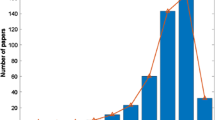Abstract
Network representation, aiming to map each node of a network into a low-dimensional space, is a fundamental problem in the network analysis. Most existing works focus on the self-level or pairwise-level relationship among nodes to capture network structure. However, it is too simple to characterize the complex dependencies in the network. In this paper, we introduce the theory of the ego network and present an ego-network-level relationship. Then a deep recurrent auto-encoder model is proposed to preserve the complex dependencies in each ego network. In addition, we present two strategies to solve the sparsity problem. Finally, we conduct extensive experiments on three real datasets. The experimental results demonstrate that the proposed model can well preserve network structure and learn a good network representation.
Access this chapter
Tax calculation will be finalised at checkout
Purchases are for personal use only
Similar content being viewed by others
References
Ahmed, A., Shervashidze, N., Narayanamurthy, S., Josifovski, V., Smola, A.J.: Distributed large-scale natural graph factorization. In: WWW, pp. 37–48. ACM (2013)
Burt, R.S.: Models of network structure. Ann. Rev. Sociol. 6(1), 79–141 (1980)
Cao, S., Lu, W., Xu, Q.: Deep neural networks for learning graph representations. In: AAAI, pp. 1145–1152 (2016)
Everett, M., Borgatti, S.P.: Ego network betweenness. Soc. Netw. 27(1), 31–38 (2005)
Grover, A., Leskovec, J.: node2vec: scalable feature learning for networks. In: SIGKDD, pp. 855–864. ACM (2016)
Linderman, S., Adams, R.: Discovering latent network structure in point process data. In: ICML, pp. 1413–1421 (2014)
Perozzi, B., Al-Rfou, R., Skiena, S.: Deepwalk: online learning of social representations. In: SIGKDD, pp. 701–710. ACM (2014)
She, Q., Chen, G., Chan, R.H.: Evaluating the small-world-ness of a sampled network: functional connectivity of entorhinal-hippocampal circuitry. Sci. Rep. 6, 21468 (2016)
She, Q., So, W.K., Chan, R.H.: Reconstruction of neural network topology using spike train data: small-world features of hippocampal network. In: EMBC, pp. 2506–2509. IEEE (2015)
She, Q., So, W.K., Chan, R.H.: Effective connectivity matrix for neural ensembles. In: EMBC, pp. 1612–1615. IEEE (2016)
Tian, F., Gao, B., Cui, Q., Chen, E., Liu, T.Y.: Learning deep representations for graph clustering. In: AAAI, pp. 1293–1299 (2014)
Wang, D., Cui, P., Zhu, W.: Structural deep network embedding. In: SIGKDD, pp. 1225–1234. ACM (2016)
Author information
Authors and Affiliations
Corresponding author
Editor information
Editors and Affiliations
Rights and permissions
Copyright information
© 2019 Springer Nature Switzerland AG
About this paper
Cite this paper
Yan, B., Huang, S. (2019). Learning Network Representation via Ego-Network-Level Relationship. In: Gedeon, T., Wong, K., Lee, M. (eds) Neural Information Processing. ICONIP 2019. Communications in Computer and Information Science, vol 1142. Springer, Cham. https://doi.org/10.1007/978-3-030-36808-1_45
Download citation
DOI: https://doi.org/10.1007/978-3-030-36808-1_45
Published:
Publisher Name: Springer, Cham
Print ISBN: 978-3-030-36807-4
Online ISBN: 978-3-030-36808-1
eBook Packages: Computer ScienceComputer Science (R0)




